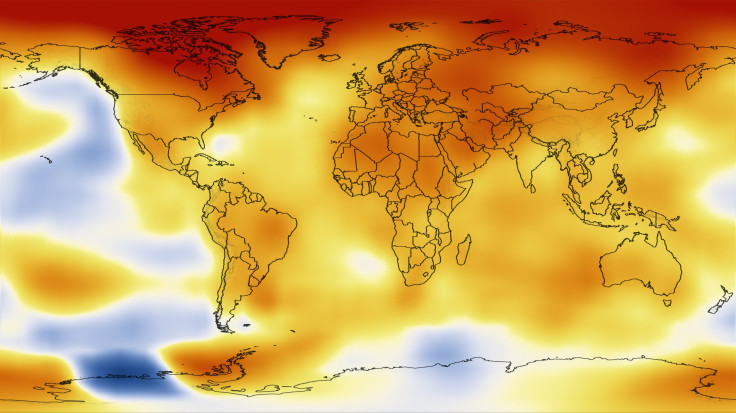2012 Was 10th-Hottest Year Worldwide, Climate Data Shows

Less than two weeks after announcing that the continental U.S. had its warmest year on record, NASA and the National Oceanic and Atmospheric Administration revealed that 2012 was the 10th warmest year worldwide since record-keeping began in 1880.
The temperature analysis conducted by NASA draws data from more than 1,000 meteorological stations worldwide, satellite observations of temperatures at the surface of the oceans, and measurements taken by Antarctic research stations. Then, researchers used a computer program to figure out how the surface temperature in a given month differed from a mid-20th century baseline -- the average temperature in that area between 1951 and 1980.
“Most areas of the world experienced higher-than-average annual temperatures, including most of North and South America, most of Europe and Africa, and western, southern, and far northeastern Asia,” NOAA said.
The areas that bucked the trend were parts of Alaska, western Canada, central Asia, and parts of the Pacific, Atlantic and Southern Oceans, which were cooler than average.
With the exception of 1998, the nine warmest years in 132 years of climate record-keeping have all occurred since 2000, according to NASA.
2012 was also the 36th year in a row that had a global temperature above the 20th-century average. The last time the world saw colder-than-average temperatures across the globe was 1976.
Globally, the average temperature in 2012 was around 58.3 degrees Fahrenheit, or 1 degree warmer than the baseline set in the mid-20th century. Since 1880, the average global temperature has risen about 1.4 degrees Fahrenheit, according to the NOAA and NASA.
While weather patterns can cause average temperatures to fluctuate from year to year, NASA expects that each decade will be warmer than the previous one, thanks to uncurbed greenhouse gas increases.
"One more year of numbers isn't in itself significant," NASA climatologist Gavin Schmidt said in a statement Tuesday. "What matters is this decade is warmer than the last decade, and that decade was warmer than the decade before. The planet is warming. The reason it's warming is because we are pumping increasing amounts of carbon dioxide into the atmosphere."
In 1880, carbon dioxide was present in the atmosphere at the level of around 285 parts per million. Today, that figure is more than 390 parts per million.
"The U.S. temperatures in the summer of 2012 are an example of a new trend of outlying seasonal extremes that are warmer than the hottest seasonal temperatures of the mid-20th century," NASA scientist James E. Hansen, director of the Goddard Institute for Space Studies, said in a statement. "The climate dice are now loaded. Some seasons still will be cooler than the long-term average, but the perceptive person should notice that the frequency of unusually warm extremes is increasing. It is the extremes that have the most impact on people and other life on the planet."
© Copyright IBTimes 2024. All rights reserved.





















